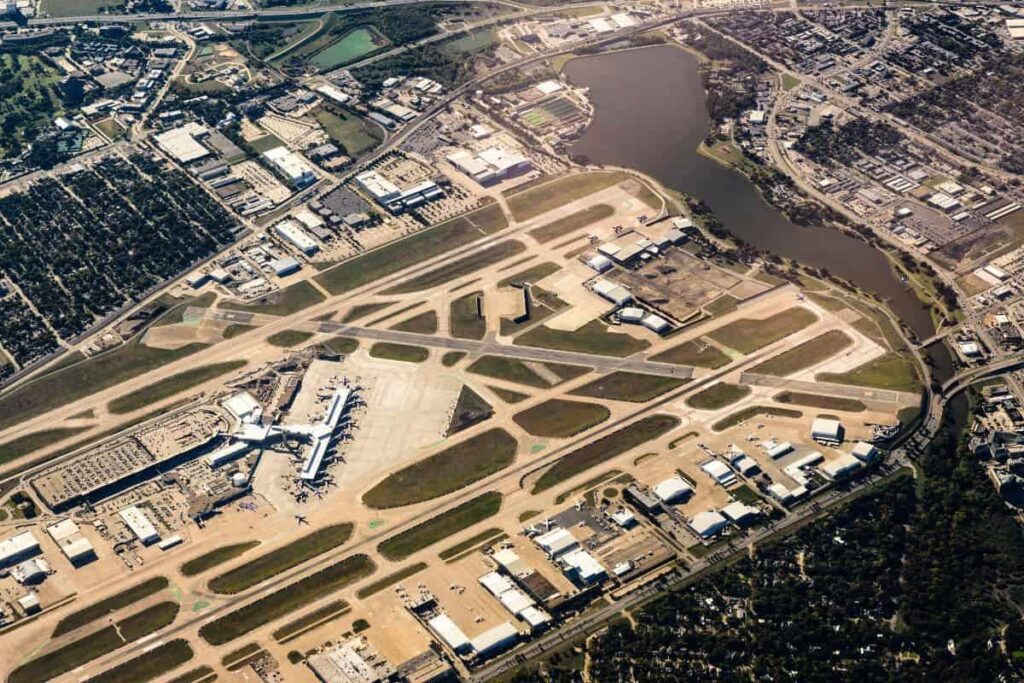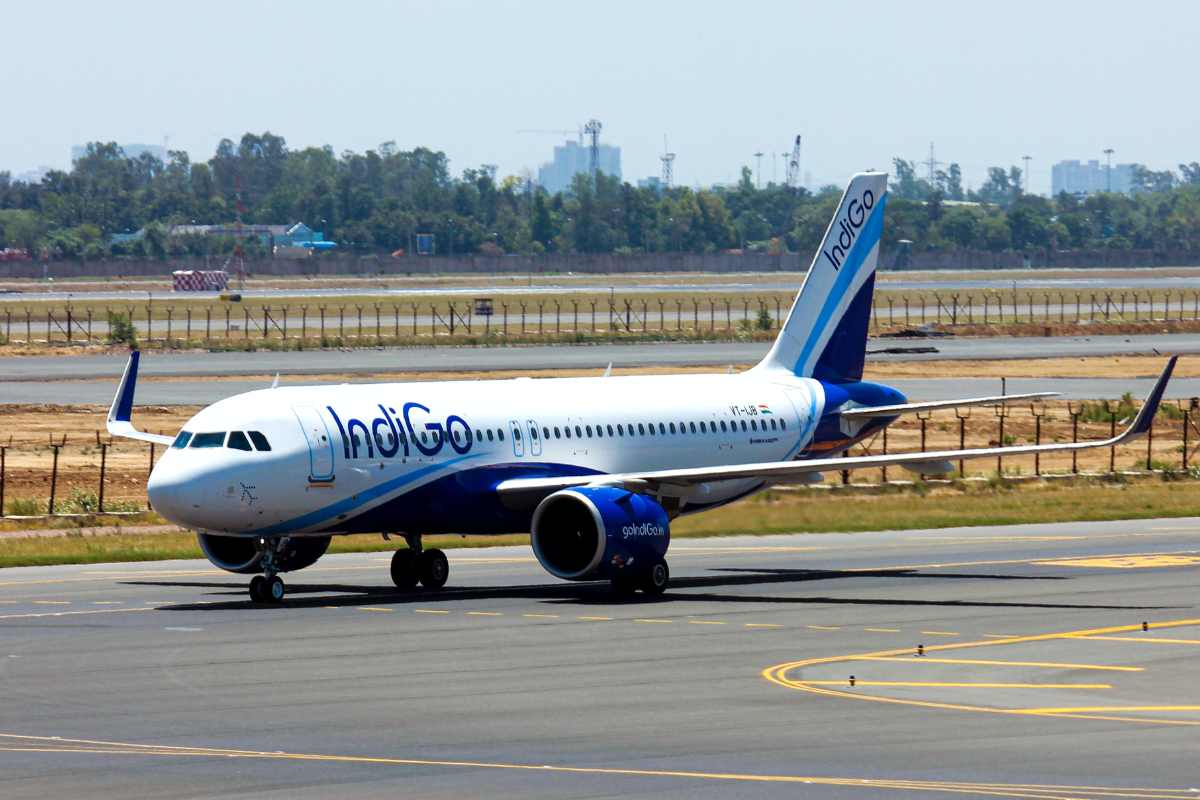A number of airports have multiple runways to provide more flight options based on wind direction and magnitude. So, which airports have the most runways in the world?
The airports with the most runways in the world are O’Hare International (with eight) and Dallas/Fort Worth International (with seven). Other airports, such as Amsterdam Schiphol, Denver International, Boston Logan International, and Detroit Metropolitan, have six runways each.
This article will dive into each of these airports’ runways and more, describing what makes them unique. Keep reading to learn more about the airports with the most runways in the world.


10 Airports With the Most Runways in the World
1. O’Hare International Airport
The airport with the most runways in the world is O’Hare International, with eight. It frequently trades the title of Busiest Airport in the US with Hartsfield-Jackson Atlanta International Airport.
O’Hare features a mock fire airplane used by firefighters to simulate a rescue mission on a downed aircraft. These simulations are performed near any of the airport’s runways to make the experience as realistic as possible. You can often see the smoke way off in the distance, giving the impression that something terrible has happened at the airport.
The airport features two sets of three runways parallel to one another, allowing for multiple parallel landings. Three planes can land simultaneously at this vast airport. Because of all the traffic, three separate air traffic control towers are required to manage everything safely.
2. Dallas/Fort Worth International Airport
Located between two major cities that give this airport its name, Dallas/Fort Worth International serves more than 73 million customers yearly. It began operations in 1974, was the first established carbon-neutral airport in North America, and features seven runways to service planes of varying sizes.
Like O’Hare, this massive airport can accommodate triple parallel landings. It also sees the third largest amount of air traffic out of any commercial airport in the world annually.
As a result, the airport is committed to becoming the first carbon-neutral airport on the continent. By offsetting the carbon emissions from the flights with green activities such as planting trees, they cancel their carbon footprint for every flight that leaves or lands on the runways.
3. Amsterdam Schiphol Airport
The Amsterdam Schiphol Airport features six runways and began operations in 1916. It’s interesting to note that this airport is located at the bottom of a former lake. Haarlemmer Lake was drained in 1852, and because the Schiphol is located in its basin, the airport is situated below sea level.
Schiphol features an airplane specifically for firefighters. Passengers may notice a plane on fire during their trip near the runway, which intends to simulate a real-life scenario for firefighters. This way, they can prepare to evacuate a plane and extinguish the flames when it happens for real.
The most famous runway at this airport is the Polderbaan, which has a landing strip in an area that was once a body of water. Situated 3.1 miles (4.98 km) from the terminal building to reduce noise pollution, the airport needs multiple air traffic control towers as a result.
4. Denver International Airport
According to Denver International Airport’s official website, it’s the world’s third-busiest airport. The airport features six runways to accommodate its massive amount of traffic.
Five runways are 12,000 feet (3657.6 m), while the remaining one is 16,000 feet (4876.8 m). The latter is North America’s longest commercial runway at over three miles long (4.84 km). The extra length is often needed due to the elevation of Denver and the high summer temperatures in the area.
5. Boston Logan International Airport
Featuring six runways, the Boston Logan International Airport is nestled within the Boston Harbor, which surrounds it on three sides. The airport began its history in 1923 as an airfield for the Massachusetts State Guard and Army Air Corps. It wasn’t until 1926 that commercial service flights began, which consisted mainly of airmail at the time.
The runways vary in length from 2,557 feet (779.37 m) to 10,081 feet (3072.68 m). They’re aligned in three directions with different magnetic headings at each threshold. Runway selection is based on ideal wind conditions, ground visibility, and taxi closures, among other factors.
6. Detroit Metropolitan Airport
With its six runways, Detroit Metropolitan Airport offers more than 1,100 flights per day. These flights are inbound and outbound to four continents. Its runways are 12,004 feet (3658.81 m), 10,000 feet (3048 m), 10,000 feet (3048 m), 8,707 feet (2653.89 m), 8,500 feet (2590.8 m), and 8,500 feet (2590.8 m) in length, allowing for different-sized airplanes to land on them when weather conditions permit.
7. Istanbul International Airport
Located just 33 miles (85.46 km) from the center of its namesake city, the Istanbul International Airport features five runways for excellent travel volume, serving more than 350 destinations globally and domestically. In 2020, the airport opened its third parallel runway, allowing for triple takeoffs and landings — making it one of just a handful of airports with this capability.
8. George Bush Intercontinental Airport
Located in the bustling city of Houston, George Bush Intercontinental Airport has five runways. It also features five terminals and serves 118 domestic locations and 69 international destinations.
The five runways have varying lengths of 12,001 feet (3657.90 m), 10,000 feet (3048 m), 10,000 feet (3048 m), 9,402 feet (2865.73 m), and 9,000 feet (2743.2 m). Their widths are all 150 feet (45.72 m). Because of their extended lengths, they can accommodate commercial jets without much trouble.
9. Hartsfield-Jackson Atlanta International Airport
Home to five runways, the Hartsfield-Jackson Atlanta International Airport is one of the busiest airports in the world and was the first to serve more than 100 million passengers in one year.
The airport started in 1925 when Atlanta leased an abandoned racetrack to establish an airfield. It became the nation’s busiest airport by 1957, serving more than two million passengers yearly.
Each runway at this airport runs from the east to the west, with two north of the terminals and the other three south of the terminals. This enables the airport to accommodate multiple take-offs and landings simultaneously. In an hour, it can see up to 90 landings and 100 departures during fair weather.
10. Washington Dulles International Airport
One of the largest airports worldwide, Washington Dulles International Airport is located in Chantilly, Virginia, and has four runways. It’s approximately 26 miles (67.33 km) from downtown Washington, DC, making travel to the nation’s capital relatively convenient.
The runways have varying lengths of 11,500 feet (3505.2 m), 11,500 feet (3505.2 m), 10,501 feet (3200.70 m), and 9,400 feet (2865.12 m). They all feature centerline and end touchdown lights to guide the pilots to a safe landing.



